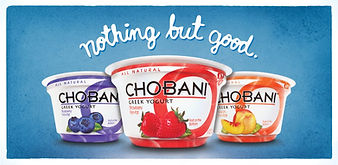CHOBANI GREEK YOGURT

HOW MATTERS
Delivering Value to Chinese Consumers
Distribution Channels
Chobanis market rollout will start in Shanghai, which is an attractive city to start off an first blitz campaign as it has a high expat community, which is more likely to already have some experience with Greek Yogurt, and is more open to change with its multicultural, fast changing society. After a successful rollout n Shanghai, the focus will stay on Tier 1 cities. With their concentrated population and diverse integration of foreigners they are suitable targets for quick rollouts with high market potential. The next Tier 1 cities will be Beijing, Guangzhou, and ShenZhen.
To create market coverage and include lower channel costs through diversification and customized selling possibilities from day one, a multiple channel distribution for Chobani Yogurt in China will be chosen. Chobani will utilize B2B when first entering their market and will distribute through retailers, convenience stores, and gyms. Chobani will focus on high class supermarkets, such as Olé, though they will try to be available in most major supermarkets so that they can reach the maximum number of target consumers simultaneously. The convenience stores that Chobani will sell their products through will be the main stop for consumers grabbing a snack on the go. Stores like Lawsons will make a good first entrance for Chobani. Gyms can offer a healthy alternative for their members to add to their diet through product supply and promotion.
As Chobani Yogurts will be sourced from their plant in Australia, logistics have to be considered. Sea freight is not a feasible option, as it takes a ship about 11 days for the journey from Australia to China and Chobani prides itself on providing fresh products (Distances and Time, 2014). To deliver the high quality product Chobani represents, air freight is the best option. Air freight is more expensive than sea freight, but it will also leave more flexibility for Chobani to react to sudden changes in demand (Sea Freight or Air Freight, 2014).
Positioning
Pricing
To decide which price should be charged Chobani needs to follow six steps:
1. Determine the Pricing Objective
Chobani is targeting a new market, and wants to build market share. One possibility is to position them as a product-quality leader in the long term.
2. Distinguish the Demand
Chinese customers’ demand for dairy products is growing, but as they are price sensitive and the good is easily exchangeable, the demand is elastic.
3. Calculate the Costs
Only if all costs, fixed and variable are covered and an excess amount of money is gained, Chobani will actually earn a profit on their investment in China. Therefore production, shipping and import tariff costs need to be determined and considered. It is assumed that the United States price for Chobani yogurt resembles the price for production and shipping. The import tariff for dairy products from Australia to China will be added into the price charged to Chinese consumers.
4. Consider the Competitors
The competitors costs, prices, and offers to the public need to be considered. Chobani needs to be aware of the competition to be able to sufficiently gain a market share against them.
5. Select a Pricing Model
Chobani’s market entry strategy will use a Going-Rate Pricing Model. The product price will be largely based on competitors’ prices, to ensure the yogurt has the possibility to gain some market share in a highly sensitive market, and gain some positive image with the local customers.
6. Select the Final Price
Considering the high-quality of the product and the market entry strategy, a price close to the competitors, covering the cost of the quality, and being comparable to existing prices in other markets, is 9.43 CNY.